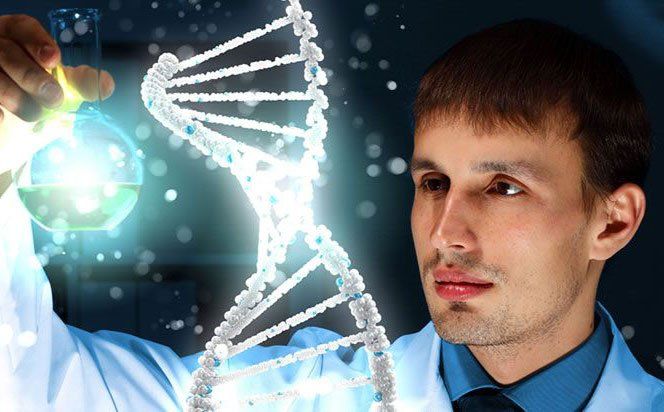MY ACCOUNT
SP1
SP1(GC box binding protein, recombinant)
- Species; Human
- Expression Host: Baculovirus-insect cell
- Tag: His-tag
- Purity: 90%
- Molecular Weight: 81.6 kDa.
- Gene Accession Number: NM_138473.
Purification and Quality Control
The His-tag recombinant protein is purified by affinity chromatography in combination with FPLC columns. The purified SP1 is greater than 90% homogeneous based on SDS-PAGE analysis.
Unit Definition (Activity)
1 unit equals 1 nanogram of purified protein. 1 unit is sufficient for a gel mobility shift assay in a 20 µl reaction; 100 units are sufficient for protein-protein interaction assays.
Applications
Purified Sp1 has been used for in vitro transcriptional activation, DNase I protection and gel mobility shift assays.
Formulation and Storage
The protein is in 20mM Tris-HCl pH7.9,100mM NaCl, 0.2mM EDTA, 1mM DTT and 20% glycerol. Stored at -70°C before use. Avoid repeated freeze thaw cycles.
Protein Sequence
MDEMTAVVKI EKGVGGNNGG NGNGGGAFSQ ARSSSTGSSS STGGGGQESQ PSPLALLAAT
CSRIESPNEN SNNSQGPSQS GGTGELDLTA TQLSQGANGW QIISSSSGAT PTSKEQSGSS
TNGSNGSESS KNRTVSGGQY VVAAAPNLQN QQVLTGLPGV MPNIQYQVIP QFQTVDGQQL
QFAATGAQVQ QDGSGQIQII PGANQQIITN RGSGGNIIAA MPNLLQQAVP LQGLANNVLS
GQTQYVTNVP VALNGNITLL PVNSVSAATL TPSSQAVTIS SSGSQESGSQ PVTSGTTISS
ASLVSSQASS SSFFTNANSY STTTTTSNMG IMNFTTSGSS GTNSQGQTPQ RVSGLQGSDA
LNIQQNQTSG GSLQAGQQKE GEQNQQTQQQ QILIQPQLVQ GGQALQALQA APLSGQTFTT
QAISQETLQN LQLQAVPNSG PIIIRTPTVG PNGQVSWQTL QLQNLQVQNP QAQTITLAPM
QGVSLGQTSS SNTTLTPIAS AASIPAGTVT VNAAQLSSMP GLQTINLSAL GTSGIQVHPI
QGLPLAIANA PGDHGAQLGL HGAGGDGIHD DTAGGEEGEN SPDAQPQAGR RTRREACTCP
YCKDSEGRGS GDPGKKKQHI CHIQGCGKVY GKTSHLRAHL RWHTGERPFM CTWSYCGKRF
TRSDELQRHK RTHTGEKKFA CPECPKRFMR SDHLSKHIKT HQNKKGGPGV ALSVGTLPLD
SGAGSEGSGT ATPSALITTN MVAMEAICPE GIARLANSGI NVMQVADLQS INISGNGF
Background
Sp1 was first detected in HeLa cells on the basis of its ability to activate the SV40 early promoter transcription (1,2). Subsequently it was shown to recognize and bind selectively to a GC-rich consensus sequence (GC-box: GGGCGG or CACCC) that presents in the promoter of several important cellular genes, including SV40 early, HIV-1, PDGF-B etc. Sp1 was the first transcription factor to be cloned and characterized(3). Analysis of structure and function has revealed that Sp1 can be separated into discrete functional domains. The DNA-binding domain consists of three zinc fingers that specifically bind to the GC-box element (4,5). Sp1 contains at least four separate transcriptional activation domains. Two of these domains are glutamine-rich, a well-characterized motif found in several other transcription factors (6). In addition to transcription, Sp1 function has been linked to cell growth, cancer, Huntington disease and other disorders through transcriptional regulation or specific protein-protein interactions (7-9). The function of Sp1 can be regulated by phosphorylation and glycosylation (10,11).
Image of SDS-PAGE / Western-blot

References
1.Dynan, WS. et al., (1983) Cell 35, 79-872.Briggs, MR. et la., (1986) Science 234, 47-52
3.Kadonaga, JT. et al., (1987) Cell 51, 1079-1090
4.Pascal, E. et al., (1991) Genes & Dev. 5, 1646-1656
5.Nagaoka, M. et al., (2001) Nucleic Acids Res. 29, 4920-4929
6.Tanaka, M. et al., (1990) Cell 60, 375-386
7.Black, AR. et al., (2001) J Cell. Physiol. 188, 143-160
8.Rafty, LA. et al., (2002) J Cell Biochem 85, 490-495
9.Dunah, AW. et al., (2002) Science 0, 10726131-0
10.Leggett, RW. et al., (1995) J Biol. Chem. 270, 25879-25884
11.Han, I. et al., (1997) Mol. Cell. Biol. 17, 2550-2558
DISCLAIMER
This products is recommended For RESEARCH USE ONLY and is Not qualified for Use in Diagnostic or Therapeutic Procedures.




